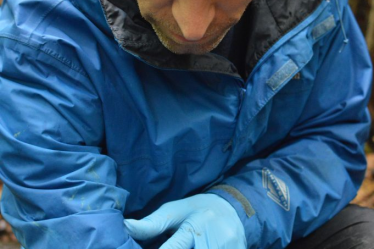Melita Wiles
Science & Environment Editor
For what seems like ages, scientists have tried to get a better grasp on climate change and the primary factors causing global warming. We are certain that greenhouse gases are a main contributor, but we still do not fully understand how clouds and aerosols — the tiny particles that create clouds — factor into this picture. Clouds can reflect incoming solar radiation away from the Earth, but also can absorb and hold onto that heat.
In her talk at The Science Café, Jennifer Faust, a professor of chemistry at Wooster, said, “The biggest uncertainty in modeling global temperature change comes from the interaction of aerosol particles and clouds,” and many scientists would agree with that statement. The complexity of this issue stems from the very beginning: the formation of a cloud. Aerosol particles create clouds with many small droplets, fewer larger droplets or ice particles. Each cloud reflects light differently. Usually the smaller the droplet, the more reflective the cloud. It is still unclear what reflective properties clouds formed from ice particles have. Faust says the science becomes even more complex when considering the chemical composition of the aerosol particles, which will also cause the cloud to reflect differently depending on the type of aerosol. Some aerosols work as reflectors to incoming sunlight, and some absorb it.
Anthropogenic aerosols can seed cloud formation in the same ways that biogenic aerosols (natural particles) do. The chemical composition of these aerosols dictate what they become — a cloud or something else. If the particle contains hydrophilic particles, then they are more likely to take in water vapor from the area and create clouds. As stated before, ice clouds are more complex to understand and scientists do not yet fully know what properties are attributed to them. Their behaviors, when it comes to reflectiveness and contribution to warming, are commonly made from bacteria and pollen. These tiny particles can be concerning when it comes to climate change, but aerosols can also contribute negatively to the air quality and can harm human respiratory systems.
Because of these complexities, cloud models are the biggest uncertainty when it comes to larger climate models. As climate models become increasingly more accurate with our newer understanding of clouds, it is not impossible to think that clouds could become thinner or completely burn off in a warmer world. This could add, at a minimum, a degree Celsius to global warming.
A new technology has come into play to possibly combat this issue, but it also brings concerns of its own. Cloud seeding is a form of weather modification that alters the amount of precipitation that falls from clouds. This is done by shooting substances like silver iodide or dry ice into the clouds to create more precipitation. This modification has many benefits and drawbacks — it can create rain if needed and could help with climate regulation, but it requires the use of harmful chemicals and is expensive. There are also concerns with how this technique could cause potential issues in the future. This technique is man-made and could negatively impact natural processes.
Our future depends on understanding how our climate changes. The big mystery is cloud formation and the composition of clouds. As Faust said, this task is not simple, but vital to human life and success. Accurately predicting future temperature changes affects science, but also migration, international relations and social justice issues.
The Science Café holds monthly lectures on Zoom that are open to the Wooster community. The next talk, “Do you have hydroponic produce on your plate?” will be held on March 24.

